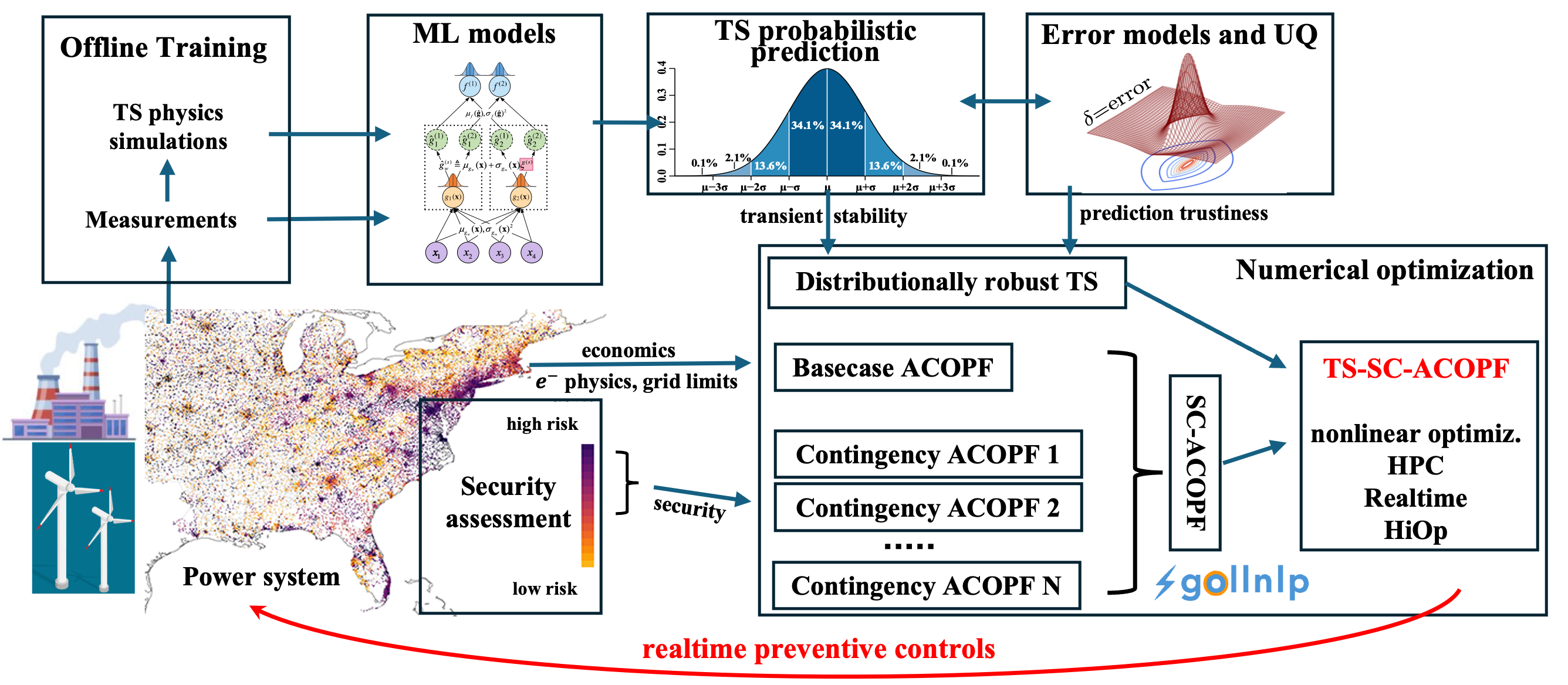Scalable Learning and Optimization for Secure and Economic Grid Operations (SLOPE-Grid)
Secure, economic, and resilient functioning of the U.S. power grid in the presence of disruptive events and increasingly diversified energy sources poses a major challenge to power grid operators and is a bottleneck towards ensuring long-term energy independence and grid reliability. Grid contingencies, including transmission failures, generation outages, and adversarial threats, pose significant stability and security risks and are also more pervasive due to more frequent extreme weather events. Also, power demand and supply are increasingly volatile with the surge of emerging distributed energy resources, which have put the stability and security of operating the power grid at an inflection point. Balancing security, affordability, and resilience has shifted from challenging to intractable for the current state of the art due to the need to consider high-fidelity stability simulations, complex contingency assessment, and a large number of what-if contingency scenarios simultaneously in the grid’s operational control loop.

To address this challenge, this project introduces a series of mathematical, computational, and modeling advancements that will significantly reduce the computational footprint of operational power grid control loops. To this end, the team develops develop physics-informed machine learning algorithms equipped with trustworthy statistical models to capture stability risks, effectively circumventing the need for intractable stability simulations within the control loop itself. Risk-averse mathematical optimization algorithms will be developed to robustly treat the stability risks together with the security risks due to contingencies while ensuring cost efficiency and safe electricity flows for the U.S. power grid systems. These developments will culminate in a streamlined high-performance computing framework that will provide end-to-end software solutions for how modern HPC, including DOE leadership computing, can be used to facilitate efficient and reliable operation as well as to assess and deter security and weather threats to the nation’s electrical power grid.
